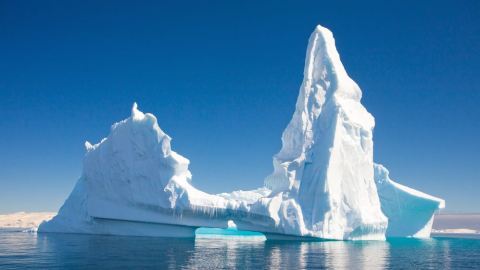Scientists Explore Moving Glacier Ice to Antarctica for Safekeeping

In a bid to preserve records of atmospheric activity, climate scientists are looking to transport ice from the planet’s mountainous regions, such as the Alps, all the way to Antarctica. As the Earth continues to warm, researchers fear that mountain glaciers will continue to melt, and that means losing precious information about how the Earth has formed over the last thousands of years.
Mountain glaciers, enormous and slowly flowing rivers of ice, are the result of up to 18,000 years of snowfall, and trapped between the individual snowflakes that helped glaciers form are tiny pockets of air. Each air bubble is a small time capsule, containing a piece of ancient atmosphere.
The French National Centre for Scientific Research is leading the charge in the Alps, where the temperature increased 1.5 degrees Celsius between 1994 and 2005. When top layers of ice melt, the water travels downward, filling the air pockets and erasing them from the climate record. Jerome Chappellaz, a member of the French research body, said:
“We are probably the only scientific community whose archive is in danger of disappearing from the face of the planet. If you work on corals, on marine sediments, on tree rings, the raw material is still here and will be for many centuries.”
Teams will drill some 130 meters deep to preserve cores of ice that reflect atmospheric records going back millennia. Once in Antarctica, researchers are confident that the ice will remain frozen for decades if not centuries. Using industrial freezers, which is how many ice cores are currently preserved, is risky because of possible power outages and mechanical failure.
Preserving ice from past centuries will also allow climate scientists to better predict how changing CO2 levels will affect life on Earth going forward. James Hansen, director of NASA’s Goddard Institute for Space Studies, outlines how and when the accumulation of greenhouse gases will make Earth uninhabitable for our species — and why human life cannot be transferred to a different planet.
Read more at the BBC.





